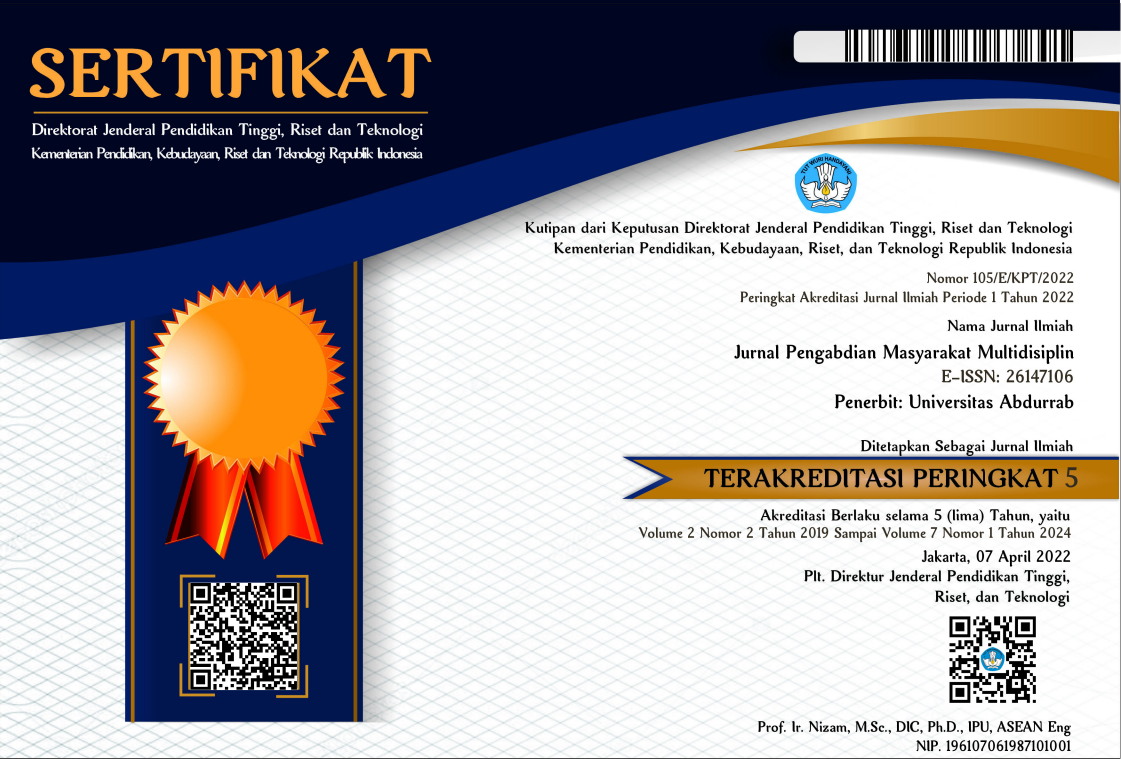DETEKSI DINI TERKAIT FLAT FOOT DI KB-TK AL-QURAN TERPADU BINTANGKU SURAKARTA
DOI:
https://doi.org/10.36341/jpm.v6i1.2616Keywords:
flat foot, clarke’s angle test, early detection, arcus pedisAbstract
Early age is the age when the pattern of growth and development is very rapid. This must be accompanied by proper education regarding growth and development, otherwise at this age the child will be susceptible to abnormalities. These disorders can be in the form of gait disorders. One of the most important parts that affect the biomechanical and musculoskeletal structures of the foot is the arch of the foot or arcus pedis. The consequences of an arch that does not grow normally include balance disorders, fatigue when walking for a long time, continuing deformity, and pain. Flat foot is the most common deformity or deformity of the foot in children. The activity was carried out at the TK-KB Al-Quran Terpadu Bintangku Surakarta school with a total of 60 children. The purpose of this activity is to see the prevalence of flat foot and preventive measures are delivered in the form of early detection using the Clarke's angle test. This program was carried out in May 2022. The results of this activity had a good impact in helping to increase children's knowledge about flat foot and it was found that the prevalence of cases was mostly experienced by males than females. The author hopes that schools can continue to routinely check flat foot activities considering that flat feet often do not cause symptoms, so early age screening is needed.
Downloads
Downloads
Published
How to Cite
Issue
Section
License
1. Copyright of all journal manuscripts is held by the Jurnal Pengabdian Masyarakat Multidisiplin.Formal legal provisions to access digital articles of electronic journal are subject to the provision of the Creative
2. Commons Attribution-ShareAlike license (CC BY-NC-SA), which means that Jurnal Pengabdian Masyarakat Multidisiplin is rightful to keep, transfer media/format, manage in the form of databases, maintain, and
3. publish articles.Published manuscripts both printed and electronic are open access for educational, research, and library purposes. Additionally, the editorial board is not responsible for any violations of copyright law.
licensed under a Creative Commons Attribution-ShareAlike 4.0 International License.







